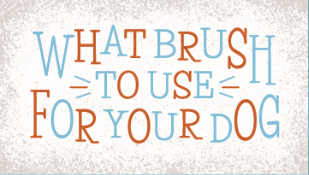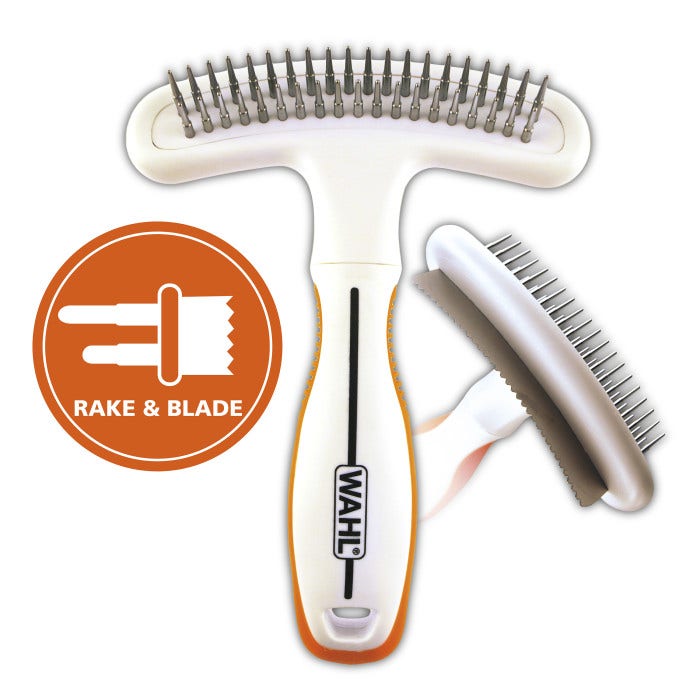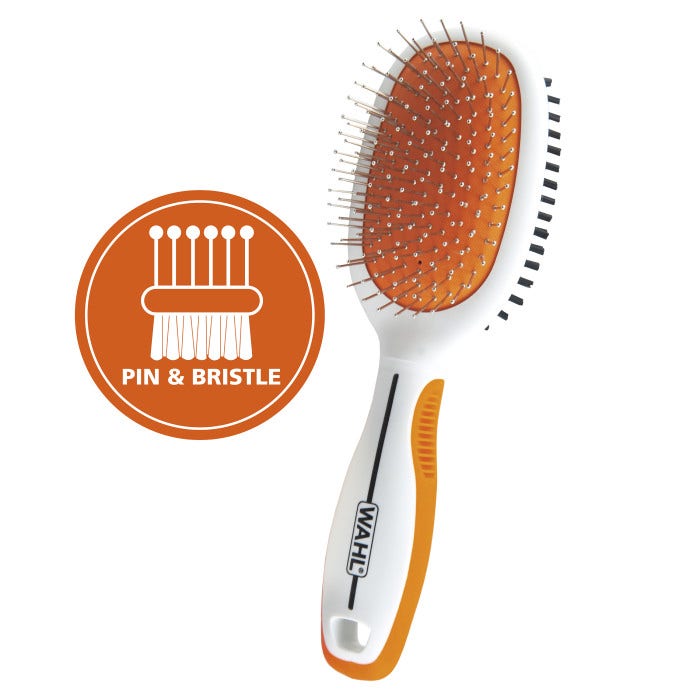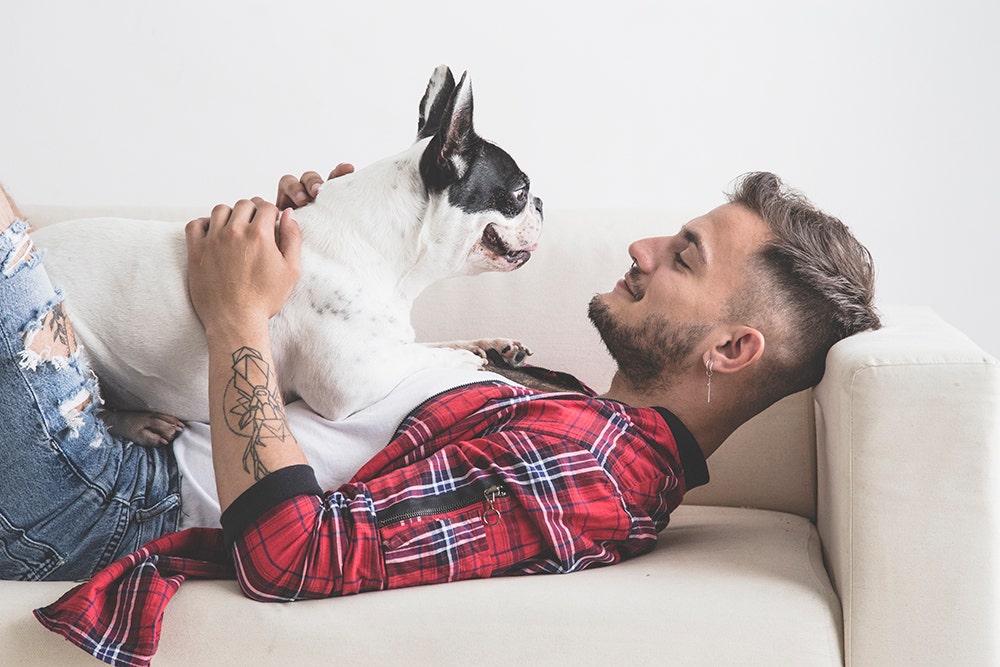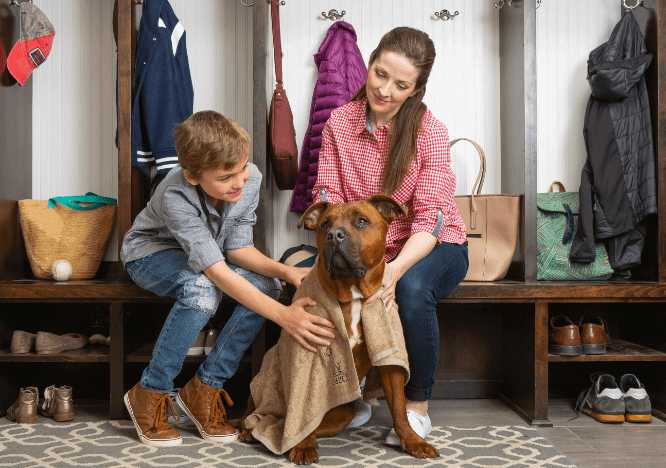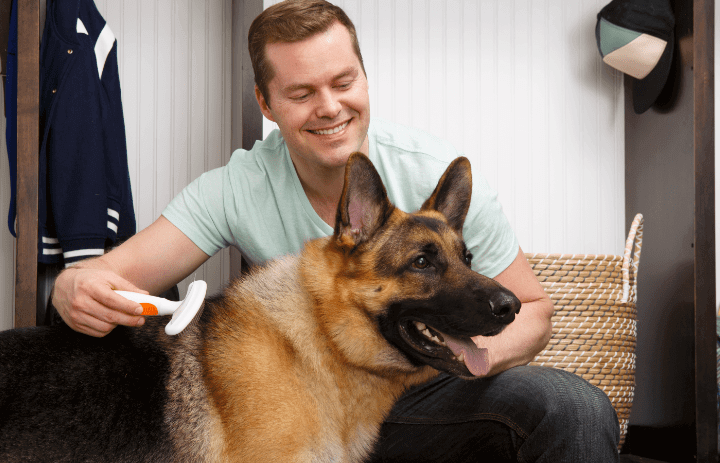9 Different Coat Types & the Best Brush to Use
Brushing your pooch is a great way to bond, promote skin health and, of course, keep the house clean. However, using the wrong brush or technique can lead to skin damage and anxiety. The truth is, many pet owners are simply using the wrong tools for the job. Done right, routine brushing stimulates blood flow while distributing the natural oils found in your dog’s skin and hair follicles. So which brush is right for your dog? Glad you asked. Here are the nine coat types and the brushes that are best suited to keep them looking great.
Smooth Coat:
Smooth coats have a lower maintenance level than other coat types. Start by using the bristle side of a bristle / pin brush combo and making light strokes that go all the way down to the skin to stimulate healthy blood flow. If shedding is extreme, use the shedding blade side of a 2-in-1 row rake to remove loose, dead hair. Be careful when using a shedding blade on a smooth coat. Too much force or focus on a specific area can lead to irritation called brush burn. Smooth-coated dogs should be brushed once or twice weekly.
Examples: Boxer, Pointer, Dalmatian
Short Coat:
This is similar to a smooth coat, but with slightly longer hairs. At least once a week, use a slicker brush from front to back of your dog’s coat. You can use a rubber curry brush to remove excess dead hair after using the slicker brush. Add a mist of detangler to add a sleek shine to your pooch’s coat. Use a bristle brush to loosen dead hairs and stimulate new hair growth.
Examples: Australian Cattle Dog, Beagle, Labrador Retriever
Combination Coat:
Dogs with combination coats often shed heavily during changing seasons. Many combination-coated dogs are in the working group or herding group meaning they were bred to excel in the elements. Now, most Goldens and Collies are family dogs only herding bunnies, squeaky toys, and occasionally, the kids. Moderate on our maintenance scale, use a slicker or pin brush to remove tangles, using a detangling spray if necessary. Once tangles are removed, you may choose to use the shedding blade on a 2-in-1 row rake to help remove dead hairs, especially during shedding seasons.
Examples: Golden Retriever, Brittany Spaniel, Border Collie
Drop Coat:
These pups have hair, not fur, which means no shedding! Our clothes and upholstery rejoice. Brush a drop-coated dog frequently with a slicker brush or pin brush, as they are far more susceptible to tangles than dogs with fur. Pay attention to the hair on their legs and face being sure to remove eye discharge to prevent tear stains and uncomfortable tugging.
Examples: Lhasa Apso, Yorkshire Terrier, Maltese
Curly Coat:
Most curly-coated dogs are low or no shedding. Because of this, they are more susceptible to mats and tangles. Regular brushing is important for these moderately high-maintenance pups. Start with a spritz of detangler and gently use a slicker brush to remove any knots. Keep your dog’s hair at a healthy length to reduce the chance of matting and tangling, which can be painful and unhealthy for your pup.
Examples: Poodle, Bichon, Portuguese Water Dog
Double Coat:
Dogs with double coats are profuse shedders who drop hair and fur constantly throughout the year and, for some, a biannual blow out. A dog with a double coat has a soft undercoat and a protective outer coat that can have short to long hair. Double-coated dogs are considered to be one of the most challenging types to groom, but with the right tools, shedding can be manageable. Brush your double-coated dog at least a few times per week. The outer coat will shed and the undercoat can get matted if neglected. Use a slicker brush and a 2-in-1 row rake to remove dead hairs, reduce shedding and maintain a smooth, beautiful coat.
Examples: German Shepard, Samoyed, Siberian Husky
Heavy Coat:
Many heavy-coated dogs are also double-coated. Considered moderate to high on the grooming scale, it is critical to groom 2-3 times each week. A heavy-coated dog owner’s tool belt should include a slicker brush and a 2-in-1 row rake. Use detangler spray before and after grooming to help remove knots, tangles, and mats easily and painlessly. Pay special attention to the areas that commonly present mats and tangles (neck, chest and hindquarters). A heavy coat should bounce when your dog walks. Or in the case of the Pekingese, when your dog struts.
Examples: Chow Chow, Newfoundland, Pekingese
Silky Coat:
Silky-coated dogs are often seasonal shedders, containing a long coat and a short smooth coat. Start with a slicker brush or pin brush to remove any tangles or matting. Massage detangler into any mats and gently brush them away. Silk-coated dogs require frequent brushing, daily, if possible.
Examples: Cocker Spaniel, English Setter, Springer Spaniel
Wire Coat:
Wire-coated dogs have a combination of short undercoat and a long wiry outer coat. The longer coat is susceptible to matting when not cared for weekly. When brushing your wirehaired dog, start with a slicker brush to help coax out tangles and mats. If tangles are stubborn, try using a liquid detangler. Next, use a bristle brush to remove surface shedding and dead hairs from your dog.
Examples: Airedale Terrier, Schnauzer, Scottish Terrier
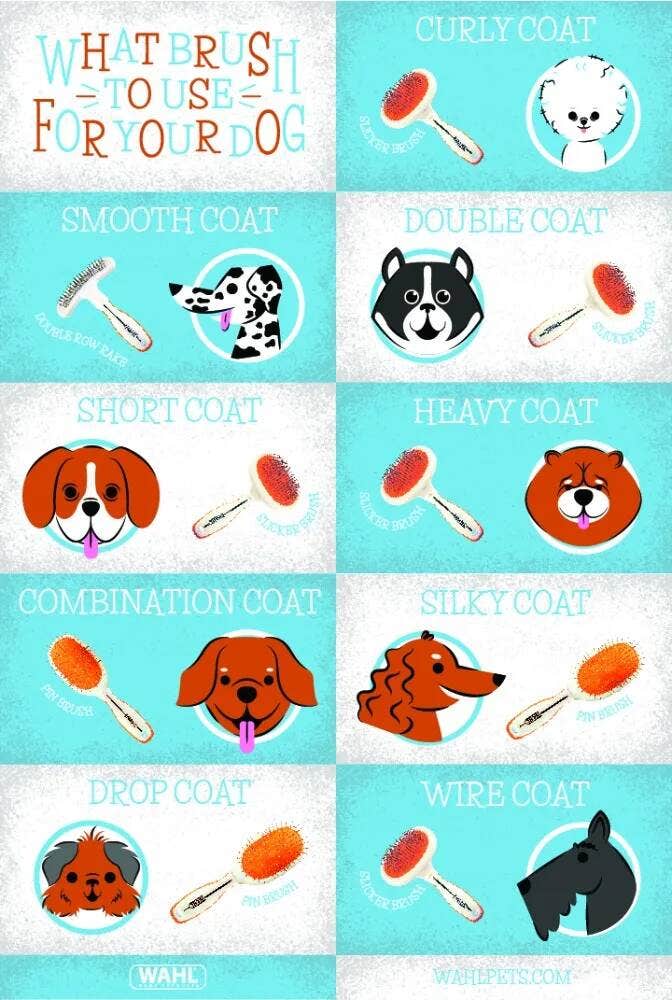
Every pup is unique and that’s part of what makes them so special to us. Click here to find specific grooming information for you pup based on breed, coat type, coat length, and size.

 India (English)
India (English)
 Middle East and Africa (English)
Middle East and Africa (English)
 South Africa (English)
South Africa (English)
 Australia (English)
Australia (English)
 Japan (日本語)
Japan (日本語)
 South East Asia (English)
South East Asia (English)
 Singapore (English)
Singapore (English)
 Europe (English)
Europe (English)
 United Kingdom (English)
United Kingdom (English)
 Argentina (Español)
Argentina (Español)
 Brazil (Portuguese)
Brazil (Portuguese)
 Colombia (Español)
Colombia (Español)
 Latin America (Español)
Latin America (Español)
 México (Español)
México (Español)
 Chile (Español)
Chile (Español)
 Peru (Español)
Peru (Español)
 Canada (English)
Canada (English)


